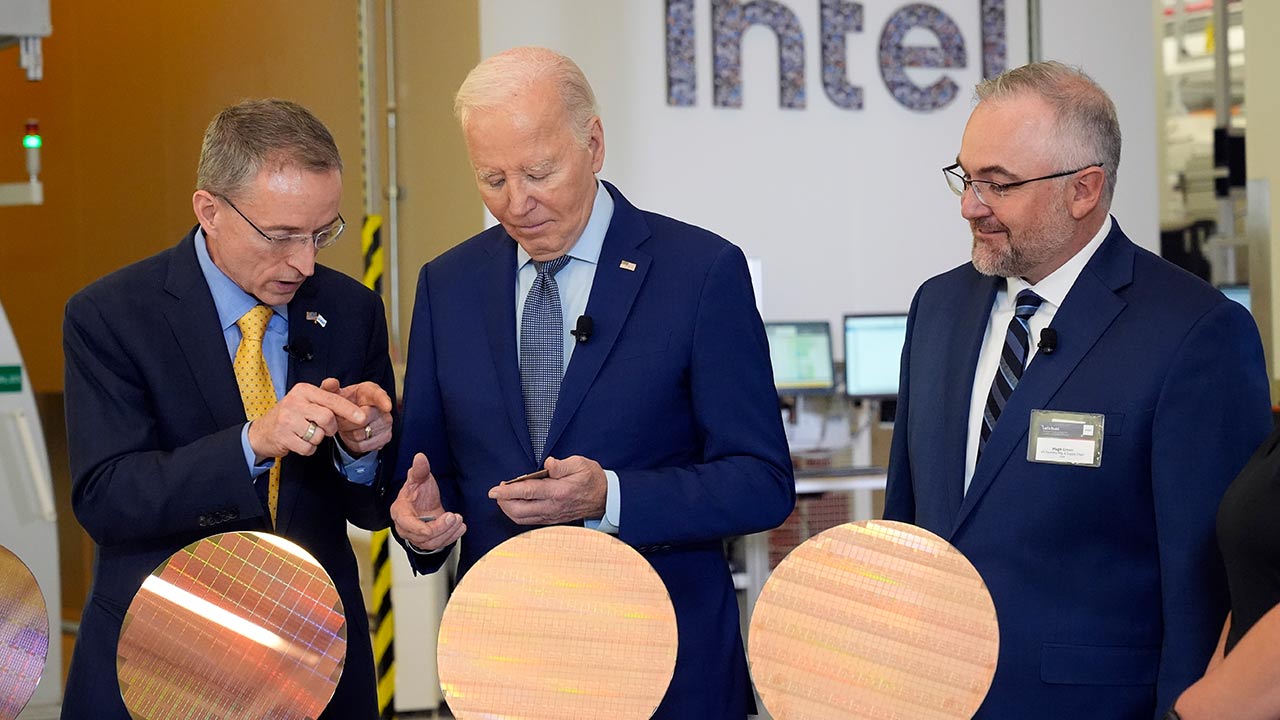Introduction:
In a landmark development for the U.S. Department of Defense’s (DoD) efforts to fortify its microelectronics capabilities, Intel has secured Phase Three of the Rapid Assured Microelectronics Prototypes – Commercial (RAMP-C) program.
This significant milestone underscores the commitment to enhancing domestic leadership in leading-edge semiconductor technology fostering resilience, sustainability, and trust in the U.S. commercial foundry ecosystem.
“Today marks another significant moment in advancing our collaboration with DoD on this program. We are very excited that for the first time in decades, U.S. government and defense industrial base customers will have access to one of the industry’s leading-edge process technologies at the same time as commercial customers. This milestone reinforces our commitment to making our capabilities, including leading-edge technologies like Intel 18A, available to a wider range of partners, furthering America’s leadership in process technology R&D, advanced manufacturing and microelectronics systems,”
~ Kapil Wadhera, Intel vice president for Foundry Services and general manager of the Government Engagements and Business Operations Group.
Follow us on LinkedIn for everything around Semiconductors & AI
Background:
Initiated under the National Security Technology Accelerator’s (NSTXL) consortium-based Strategic and Spectrum Missions Advanced Resilient Trusted Systems Other Transaction Authority (S2MARTS OTA) program, RAMP-C seeks to revitalize the U.S.’s position in cutting-edge semiconductors.
By incentivizing the establishment of a robust commercial foundry ecosystem, the program aims to cater to the stringent requirements of both the defense industrial base (DIB) and commercial sectors.
Read More: How Reinforcement Learning Can Disrupt VLSI Design? – techovedas
Intel’s Involvement:
Since its inception, Intel has played a pivotal role in driving the RAMP-C initiative forward. Selected to lead the program’s first phase in 2021, Intel laid the groundwork by defining technology and yield plans, developing essential intellectual property (IP), and nurturing ecosystem collaborations.
Phase Two witnessed an expansion of RAMP-C’s scope, with Boeing and Northrop Grumman joining forces to leverage Intel’s 18A process technology.
Now, with Phase Three, Intel is poised to facilitate the fabrication of test chips and prototypes crucial for advancing defense and commercial systems.
Under the RAMP-C initiative, Intel Foundry has joined forces with key players in the industry, such as Microsoft, Nvidia, IBM, Cadence, Synopsys, Boeing, Northrop Grumman, and others. Together, they aim to address both commercial and U.S. government requirements for the development and production of integrated circuits.
This collaboration aims to establish and showcase a semiconductor IP ecosystem. It focuses on creating and fabricating test chips using Intel’s advanced 18A process technology.
Additionally, Intel Foundry has launched the U.S. Military, Aerospace, and Government (USMAG) Alliance. This alliance brings together partners specializing in electronic design automation (EDA), intellectual property (IP), and design services.
It is dedicated to serving Defense Industrial Base (DIB) customers, ensuring that security standards required by USMAG applications are met using Intel foundry technology and solutions.
Read More: What are Key Implications of Tesla’s Full Self-Driving Technology Adoption in China – techovedas
Significance of Phase Three:
The latest award marks a critical juncture in the RAMP-C program, as it paves the way for the tape-out and testing of early DIB product prototypes using Intel’s 18A process technology.
This signifies a significant step towards democratizing access to cutting-edge semiconductor technology for both government and commercial entities.
By enabling the manufacturing of prototypes on Intel’s advanced process nodes, RAMP-C aims to empower innovators to realize their designs with unprecedented performance and reliability.
Read More: Samsung Collaborates with UMC to Build Image Sensors in Fab Lite Model to Overtake SONY – techovedas
Intel 18A Process Technology:
Central to Intel’s contribution to RAMP-C is its 18A process technology, renowned for its leading-edge capabilities.
With this technology, customers gain access to state-of-the-art fabrication processes. This ensures optimal performance, power efficiency, and reliability for their integrated circuits.
Moreover, Intel’s commitment to making these capabilities available domestically underscores its dedication to bolstering America’s leadership in semiconductor R&D and advanced manufacturing.
Read More: Ola Krutrim Challenges Tech Giants with Launch of AI Cloud Platform and Assistant App – techovedas
Future Prospects:
Looking ahead, RAMP-C aims to demonstrate the production of Intel 18A chips in 2025. This milestone heralds a new era of processing performance for the DoD. RAMP-C prioritizes advancing microelectronics technologies.
It fosters close collaboration between the defense industrial base and commercial entities. RAMP-C’s mission is to bolster national security and technological innovation.
Read More:$42 Million: PSMC Opens New Factory to Produce 50,000 12-Inch Wafer including CoWoS – techovedas
Conclusion:
Intel’s achievement in securing Phase Three of the RAMP-C program signifies a significant milestone in advancing U.S. microelectronics leadership.
Intel is transforming the semiconductor landscape. It leverages advanced process technology and a collaborative ecosystem. Intel is committed to domestic innovation.
RAMP-C promises unparalleled capabilities. It ensures security and resilience of critical defense and commercial systems.




